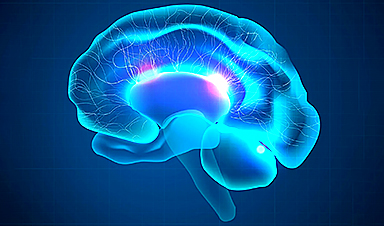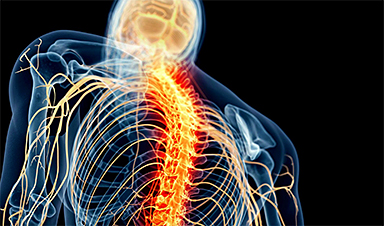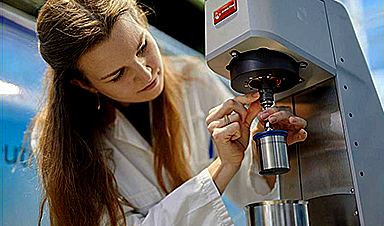The Centers for Disease Control and Prevention estimates that more than 2.8 million Americans experience antibiotic-resistant infections each year; more than 35,000 die from those infections.
The study, “Hydrophilic Nanoparticles that Kill Bacteria while Sparing Mammalian Cells Reveal the Antibiotic Role of Nanostructures,” was published Jan. 11 by Nature Communications.
Past research has shown that hydrophobicity (a molecule’s ability to repel water) and hydrophilicity (a molecule’s ability to attract and dissolve in water) affects cells; the more hydrophobic a substance is, the more adverse the reaction it will cause. However, Liang said, there is no quantitative standard for how much hydrophobicity is acceptable.
“Basically, you can kill bacteria when you increase hydrophobicity,” Liang said. “But it will also kill healthy cells, and we don’t want that.”
For their study, the Liang team used novel hydrophilic nanoparticles known as nanoantibiotics that were developed by Liang’s laboratory. Structurally speaking, these novel nanoantibiotics resemble tiny hairy spheres, each composed of many hydrophilic polymer brushes grafted onto silica nanoparticles of different sizes.
These synthetic compounds, which Liang’s lab produces, are designed to kill bacteria via membrane disruptions like antimicrobial peptides do, but through a different mode of membrane remodeling that damages bacterial membranes and not mammalian cells. Antimicrobial peptides are a diverse class of amphipathic molecules (partially hydrophilic-partially hydrophobic), which occur naturally and serve as the first line of defense for all multicellular organisms. The direct use of antimicrobial peptides as antibiotics is limited by their stability and toxicity.
There have been other studies in which researchers grafted amphipathic molecules onto nanoparticles, and they too kill bacteria. However, Liang said the primary issue in using amphipathic molecules is that it becomes very difficult to strike the right balance between their hydrophobicity and hydrophilicity so that the toxicity of these molecules to our own cells is significantly reduced.
“In our case, we remove that uncertainty from the equation because we started with a hydrophilic polymer,” Liang pointed out. “The cytotoxicity of hydrophobic moieties is not a concern anymore. Those hydrophilic polymers by themselves, or the silica nanoparticles alone don’t kill bacteria; they have to be grafted onto the nanostructure to be able to kill bacteria. And so, this is the first important discovery.”
The Liang team also discovered that the degree of antibiotic activity is affected by the size of the hairy spheres, which according to Liang is the second important discovery of this research. Those measuring 50 nanometers and below appear to be much more active than those whose size exceeds 50 nanometers. Liang said those measuring approximately 10 nanometers appear to be the most active. (Using synchrotron small angle X-ray scattering and other methods, the Liang team is able to interpret the molecular mechanism of the size-dependent antibiotic activity.)
These discoveries are important because using nanoantibiotics to kill bacteria evades all known mechanisms of bacterial resistance unless bacteria completely revamp their pathways for making cell membranes, which Liang said is unlikely.
“It is also nearly impossible for bacteria to develop new resistance against the nanoantibiotics,” Liang emphasized. “Furthermore, this discovery illuminates a blueprint to develop new antibiotics that would kill bacteria upon contact, but remain amiable to humans because they are produced using non-toxic and environmentally friendly ingredients via nanoengineering.”
News
The Silent Battle Within: How Your Organs Choose Between Mom and Dad’s Genes
Research reveals that selective expression of maternal or paternal X chromosomes varies by organ, driven by cellular competition. A new study published today (July 26) in Nature Genetics by the Lymphoid Development Group at the MRC [...]
Study identifies genes increasing risk of severe COVID-19
Whether or not a person becomes seriously ill with COVID-19 depends, among other things, on genetic factors. With this in mind, researchers from the University Hospital Bonn (UKB) and the University of Bonn, in [...]
Small regions of the brain can take micro-naps while the rest of the brain is awake and vice versa
Sleep and wake: They're totally distinct states of being that define the boundaries of our daily lives. For years, scientists have measured the difference between these instinctual brain processes by observing brain waves, with [...]
Redefining Consciousness: Small Regions of the Brain Can Take Micro-Naps While the Rest of the Brain Is Awake
The study broadly reveals how fast brain waves, previously overlooked, establish fundamental patterns of sleep and wakefulness. Scientists have developed a new method to analyze sleep and wake states by detecting ultra-fast neuronal activity [...]
AI Reveals Health Secrets Through Facial Temperature Mapping
Researchers have found that different facial temperatures correlate with chronic illnesses like diabetes and high blood pressure, and these can be detected using AI with thermal cameras. They highlight the potential of this technology [...]
Breakthrough in aging research: Blocking IL-11 extends lifespan and improves health in mice
In a recent study published in the journal Nature, a team of researchers used murine models and various pharmacological and genetic approaches to examine whether pro-inflammatory signaling involving interleukin (IL)-11, which activates signaling molecules such [...]
Promise for a universal influenza vaccine: Scientists validate theory using 1918 flu virus
New research led by Oregon Health & Science University reveals a promising approach to developing a universal influenza vaccine—a so-called "one and done" vaccine that confers lifetime immunity against an evolving virus. The study, [...]
New Projects Aim To Pioneer the Future of Neuroscience
One study will investigate the alterations in brain activity at the cellular level caused by psilocybin, the psychoactive substance found in “magic mushrooms.” How do neurons respond to the effects of magic mushrooms? What [...]
Decoding the Decline: Scientific Insights Into Long COVID’s Retreat
Research indicates a significant reduction in long COVID risk, largely due to vaccination and the virus’s evolution. The study analyzes data from over 441,000 veterans, showing lower rates of long COVID among vaccinated individuals compared [...]
Silicon Transformed: A Breakthrough in Laser Nanofabrication
A new method enables precise nanofabrication inside silicon using spatial light modulation and laser pulses, creating advanced nanostructures for potential use in electronics and photonics. Silicon, the cornerstone of modern electronics, photovoltaics, and photonics, [...]
Caught in the actinium: New research could help design better cancer treatments
The element actinium was first discovered at the turn of the 20th century, but even now, nearly 125 years later, researchers still don't have a good grasp on the metal's chemistry. That's because actinium [...]
Innovative Light-Controlled Drugs Could Revolutionize Neuropathic Pain Treatment
A team of researchers from the Institute for Bioengineering of Catalonia (IBEC) has developed light-activated derivatives of the anti-epileptic drug carbamazepine to treat neuropathic pain. Light can be harnessed to target drugs to specific [...]
Green Gold: Turning E-Waste Into a Treasure Trove of Rare Earth Metals
Scientists are developing a process inspired by nature that efficiently recovers europium from old fluorescent lamps. The approach could lead to the long-awaited recycling of rare earth metals. A small molecule that naturally serves [...]
Cambridge Study: AI Chatbots Have an “Empathy Gap,” and It Could Be Dangerous
A new study suggests a framework for “Child Safe AI” in response to recent incidents showing that many children perceive chatbots as quasi-human and reliable. A study has indicated that AI chatbots often exhibit [...]
Nanoparticle-based delivery system could offer treatment for diabetics with rare insulin allergy
Up to 3% of people with diabetes have an allergic reaction to insulin. A team at Forschungszentrum Jülich has now studied a method that could be used to deliver the active substance into the [...]
Nanorobot kills cancer cells in mice with hidden weapon
Researchers at Karolinska Institutet in Sweden have developed nanorobots that kill cancer cells in mice. The robot's weapon is hidden in a nanostructure and is exposed only in the tumor microenvironment, sparing healthy cells. [...]




















